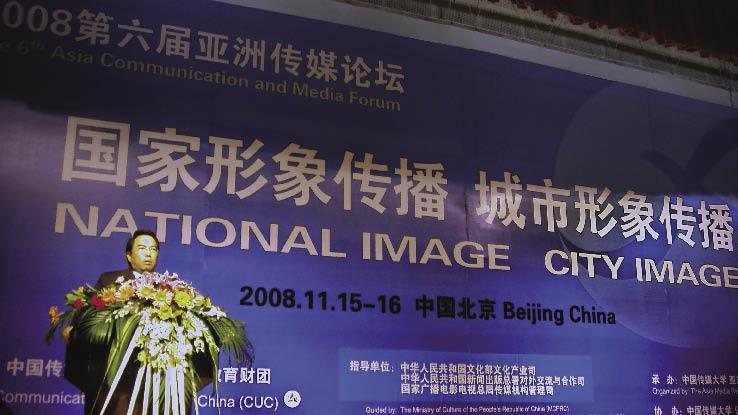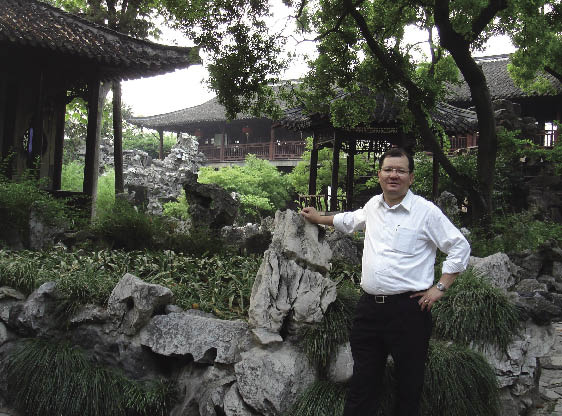Foreign Expertise in Chinese Urban Planning
By staff reporter ZHANG XIAOGUO
IN recent years, former New York City Planning Commissioner James Jao, now the CEO of the Long On Group, has found himself busy with the urban planning of Chinese cities. He has also found some important differences between planning in China and the U.S. "In China, whenever there is a meeting on urban planning, top local officials will be sure to squeeze in time for it, no matter how busy they are. In contrast U.S. mayors don't always attend such meetings."
 |
| The Opening Ceremony of 2008 Asia Communication and Media Forum |
 |
| Former New York City Planning Commissioner James Jao now works mainly in China |
James Jao appeared at the 2008 Asia Communication and Media Forum last November in Beijing. This annual event was launched in 2003 by the Asia Media Research Center, an academic research organization jointly founded by the Communication University of China and the Korea Foundation for Advanced Studies. The forum spotlights various topics of current concern, and this time focused on national and city images. The organizers invited more than 160 government officials, scholars, media personnel and professional urban planners from 18 countries and regions to exchange views on national image building and the development of urban planning in China.
The pace of urbanization in China has been incredibly fast. Every year there are tens of millions of people swarming into the cities. Beijing alone requires an additional 10 million square meters of housing every year simply to keep up with demand. Within the next five years, it is expected that China will build around 300 new cities. By 2010, there will be nearly 200 mega cities with a population of over 1 million. By 2050, around 550 million additional residents will be relocated to urban areas, representing a national urbanization rate of 70 percent, compared to 39 percent in 2006.
Urbanization will inevitably bring many problems demanding the attention of the Chinese government, and China needs to deal with housing and additional basic infrastructure such as roads, parks, public transport, and sewage and garbage disposal facilities. Moreover, China is facing many environmental problems, and needs to improve the efficiency of water, land and energy use in order to best utilize limited resources. Early planning is necessary to achieve all these things.
Partly because of the huge market represented by the Chinese mainland, Jao shifted the headquarters of Long On from Hong Kong to Beijing in 1993. Since then the group has participated in more than 300 projects in some 50 Chinese cities. Currently most of Long On's business is tied up in architectural design and urban planning projects in China.
When Jao started to work in China, he was as much surprised by municipal leaders' ardent concern with the planning of their cities as he was by the lack of citizens' involvement. "I find ordinary Chinese seldom participate in the planning of their cities, which is completely different to developed countries. I guess that is a result of cultural and political differences." However, Jao insists that Chinese citizens should actively involve themselves and that planning should be based on local residents, who are the end-users. "We need to let people decide their own living environment," he urges.
Jao points out that urban planning is still at an "adolescent" stage in many Chinese cities, judging by the level of professional practice. In contrast to the situation in the U.S. and other developed countries, in these cities urban planning is largely the job of local government officials rather than professional urban planners, though they execute the job by seeking professional help.
| 